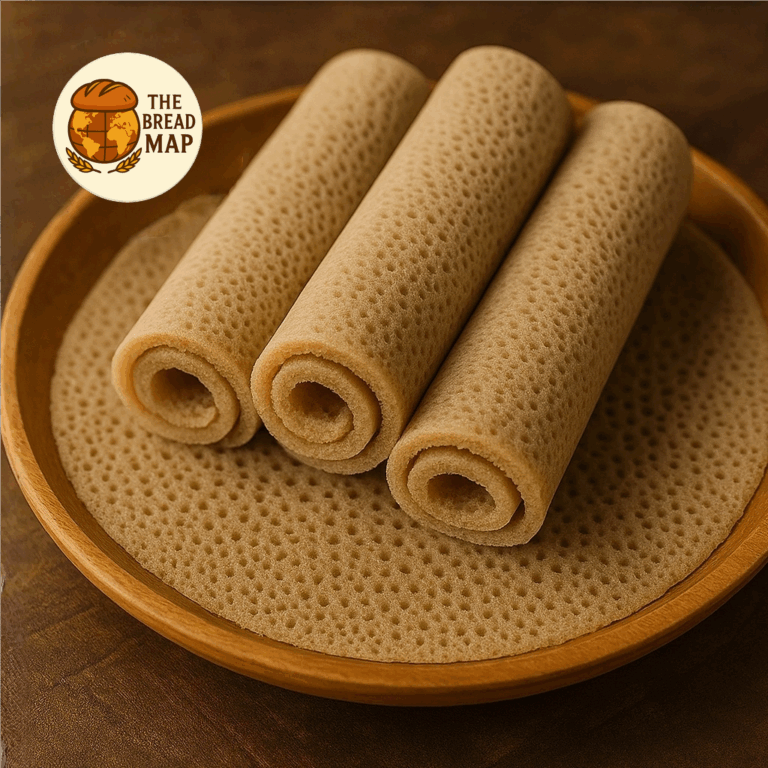
Injera is unlike any bread you’ve ever tasted—or eaten off of. With its tangy flavor and spongy, absorbent texture, injera is both food and function. It’s the communal canvas upon which Ethiopia and Eritrea lay their most beloved stews, vegetables, and lentils. If bread can tell a story, injera speaks volumes about heritage, hospitality, and the warm, shared experience of African cuisine.
Historical Background
The origins of injera stretch back centuries, rooted deeply in the highlands of Ethiopia and Eritrea. Traditionally homemade and passed from generation to generation, injera is believed to date back to ancient Abyssinia where fermented cereals were one of the earliest staples. The bread’s naturally sour flavor developed from long fermentation also made it safer to eat and easier to digest in hot climates—likely contributing to its enduring popularity.
The primary grain used—teff—has itself been cultivated in the Horn of Africa for over 3,000 years. Known for being one of the smallest grains in the world, teff is tiny but mighty, rich in nutrients, and closely tied to Ethiopian cultural identity.
Region of Origin
Injera is native to Ethiopia and Eritrea, where it’s more than just a traditional food—it’s a way of life. Across both nations, injera serves as the foundation of meals, laid out like a giant edible tablecloth and topped with colorful mounds of wot (spicy stews), lentils, meats, and vegetables. The sharing of injera promotes intimacy and connection—every hand reaching into the same plate, tearing a piece from the edge, and diving into the center.
In regions like Tigray, Oromia, and Amhara, subtle variations exist, but injera’s cultural presence remains constant. Even among diaspora communities worldwide, injera continues to link generations to their roots.
Ingredients and Preparation
The magic of injera lies not in complexity, but in patience and fermentation. The base recipe is elegantly simple but requires days of nurturing to allow natural yeasts to develop its signature sour tang and bubbly texture.
- Teff flour – preferably whole grain, either brown or ivory teff
- Water – to mix and ferment the batter
- Time – usually 2–3 days of fermentation
The batter is poured in a circular motion onto a large flat griddle called a mitad and cooked only on one side, creating a lacy, cratered surface known as the eyes of injera. A properly made injera is spongy, translucent, and flexible—perfect for scooping up sauces and holding flavor in every bite.
Cultural Importance
To understand injera is to glimpse the core of Ethiopian and Eritrean social life. It’s not just food—it’s how people connect. Meals are traditionally enjoyed from a communal platter, with no need for forks or knives—all is done with one’s hands, neatly scooping up stews and curries with torn pieces of injera.
Injera also reflects deeper values:
- Community – Meals are shared, often among large family gatherings.
- Hospitality – Serving injera is a symbol of welcome and respect.
- Tradition – Recipes and preparation methods are passed down through generations.
- Identity – Among the Ethiopian and Eritrean diasporas, injera remains a comforting connection to home.
In today’s globalized food scene, injera holds a special place—it hasn’t changed much, because it doesn’t need to. It continues to be a living symbol of culture and continuity, served at weddings, holy days, and everyday dinner tables alike.
So next time you encounter this tangy, tantalizing bread, remember: injera isn’t just part of the meal—it is the meal, woven into the fabric of community, history, and taste.
Leave a Reply